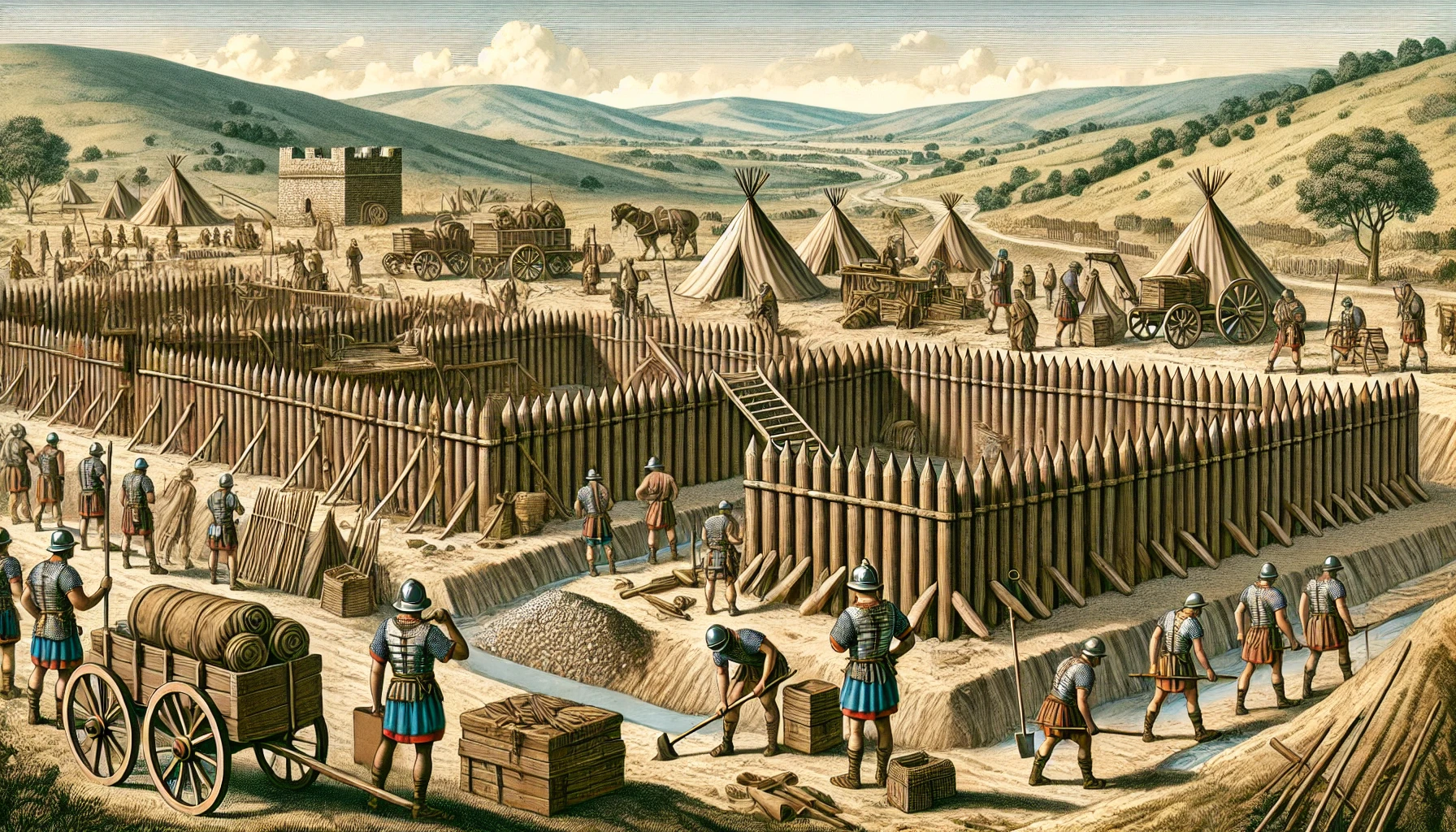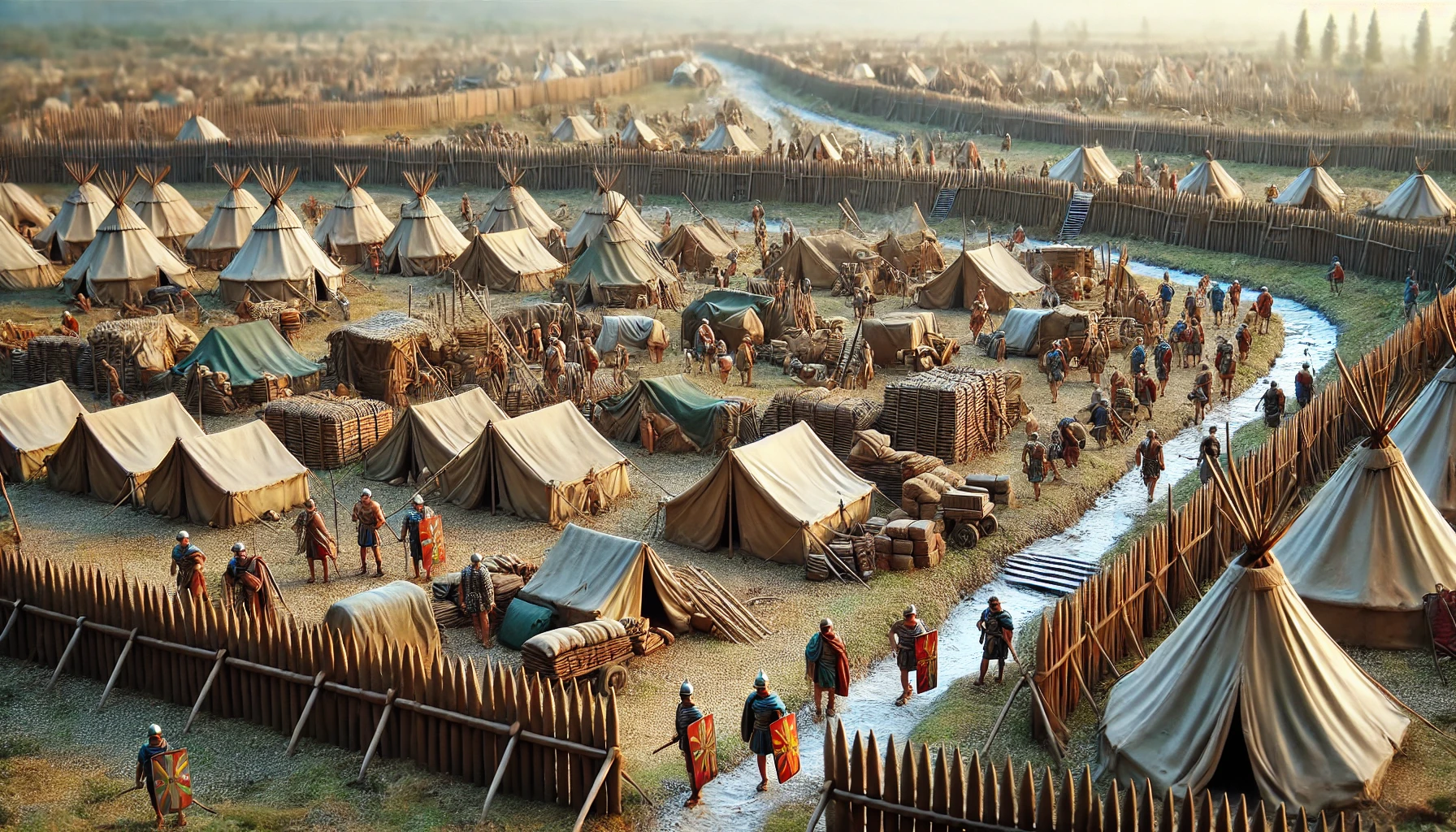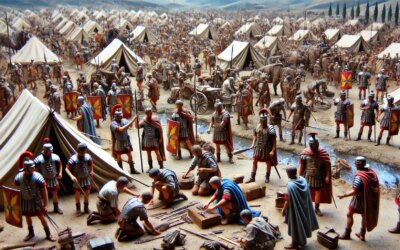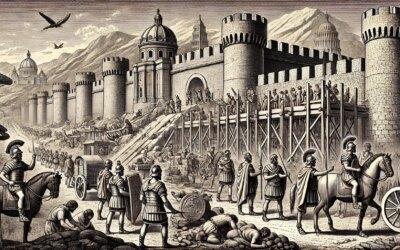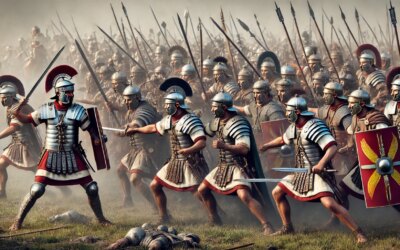Fortresses of Empire
In the rugged countryside of Gaul or the windswept plains of Hispania, hundreds of Roman soldiers toil with shovel and pickaxe. Timber is cut, trenches are dug, and towers rise from the earth. This is Rome’s military engineering in action during the 1st century BC—a strategy not just of combat, but of construction. With saws and surveying tools in hand, Roman legions built the foundations of conquest long before the battle ever began.
The Role of Engineering in Roman Warfare
Engineering was a cornerstone of Roman military doctrine. While known for discipline and battlefield tactics, Rome’s true power lay in its ability to transform landscapes into tools of war. Fortifications, bridges, siege machines, and roads extended the legions’ reach and sustained campaigns deep into hostile territory.
In the 1st century BC, during the Gallic Wars, civil conflicts, and eastern campaigns, military engineers—architecti militares—ensured that every encampment and siege position was fortified, functional, and formidable.
Constructing the Castra: The Roman Fort
Wherever Roman legions marched, they built a castrum—a fortified camp that could be erected in a single day. The typical fort layout was rectangular with rounded corners, featuring:
- Defensive ditches (fossa) dug around the perimeter
- Earthen ramparts (agger) topped with wooden palisades
- Watchtowers at regular intervals for sentries and archers
- Gates (porta praetoria, decumana) carefully aligned with roads and terrain
Within, the fort was organized with near mathematical precision: barracks, granaries, command tents, and workshops were laid out in a grid. This standardized approach ensured efficiency and cohesion, even under duress.
The Labor Behind the Lines
Construction was carried out by legionaries themselves. Each soldier carried entrenching tools as part of his gear and was trained in basic engineering. Specialized units, such as fabri (engineers) and libratores (surveyors), oversaw the planning and execution of more complex structures.
Tasks included:
- Clearing and leveling terrain
- Cutting timber and quarrying stone
- Constructing ditches and ramparts
- Assembling prefabricated watchtowers and bridges
This labor was not mere busywork—it was central to the legion’s survival and success.
Fortification in Action: The Siege of Alesia (52 BC)
Perhaps the most famous example of Roman military engineering is Julius Caesar’s siege of Alesia. Facing the Gallic chieftain Vercingetorix, Caesar encircled the city with an 18-kilometer ring of fortifications to trap the enemy. Then, anticipating reinforcements, he constructed a second outer wall of 21 kilometers to defend against attacks from behind.
This double circumvallation—complete with towers, ditches, palisades, and booby traps—demonstrated Rome’s capacity to wage war through engineering brilliance. The Gallic defeat at Alesia cemented Roman dominance in Gaul.
Temporary Structures and Field Innovation
Rome’s engineers also built:
- Mobile bridges over rivers, like Caesar’s wooden bridge across the Rhine in 55 BC
- Siege ramps and towers for assaults on walled cities
- Field hospitals (valetudinaria) with drainage systems
- Signal towers and outposts in frontier regions
These were often built with astonishing speed and precision. Field reports mention entire bridges constructed in less than two weeks and forts raised overnight during forced marches.
Tools of the Trade
Roman military engineers used a wide array of instruments:
- Groma and chorobates for surveying straight lines and levels
- Shovels, pickaxes, and hoes for earthworks
- Saws, axes, and augers for carpentry
- Ropes and pulleys for lifting and positioning materials
The precision achieved with these tools, and the training behind their use, rivaled anything in the pre-modern world.
Long-Term Impact and Strategic Value
Roman forts often evolved into permanent settlements and cities. Sites like York (Eboracum), Cologne (Colonia Agrippina), and Vienna (Vindobona) began as military outposts. Roads and supply lines established to support these garrisons became arteries of imperial administration and trade.
The legacy of Roman military engineering is evident in the continued use of their techniques by medieval builders and modern military engineers. Their principles of fortification remained unchallenged for centuries.
Legacy of Structure and Strength
Roman victory was never just about the sword—it was about preparation, planning, and the power of infrastructure. Their ability to engineer the battlefield before the first arrow was loosed gave them a decisive edge. In every trench dug and palisade raised, the might of Rome took form—not just as force, but as foresight.
Even today, in the outlines of ruined forts and the straight roads that trace across Europe, we see the imprint of a civilization that built its empire not only with soldiers, but with surveyors, carpenters, and the quiet genius of order.

